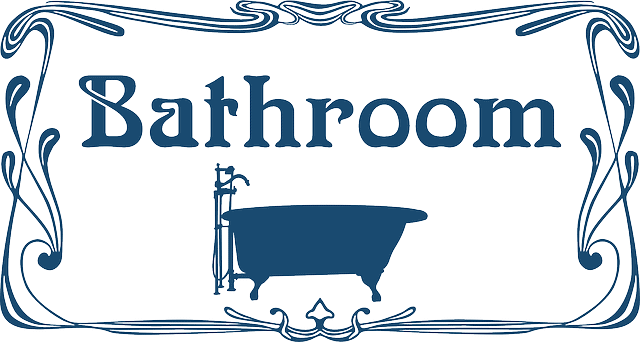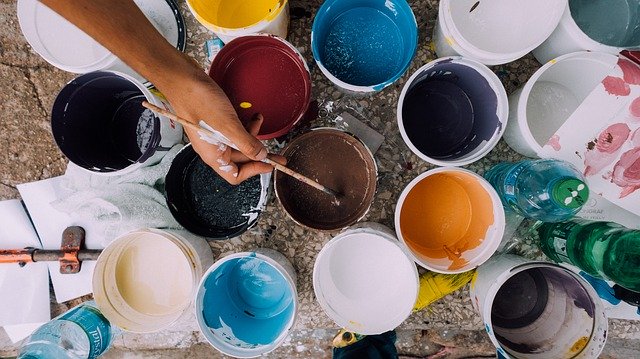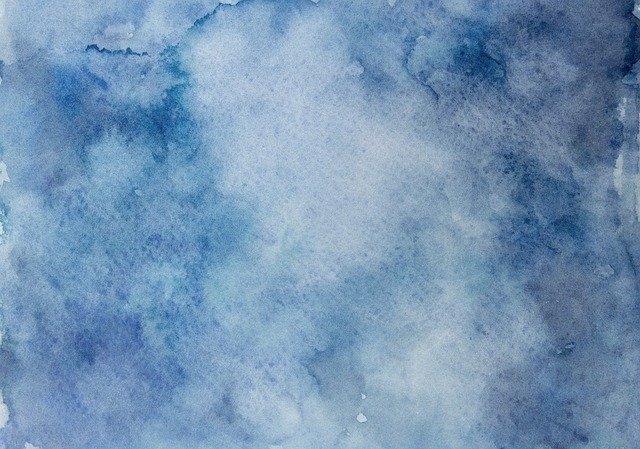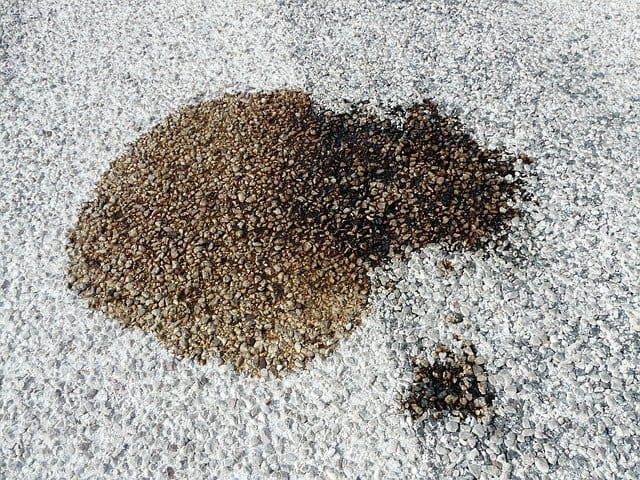What is Latex Paint Used For?
Various types of paints are manufactured in certain forms and concentrations in order to serve a given purpose. Perhaps you have come across latex in your place and wonder where it’s best used for. Can latex paint be applied to concrete or furniture? 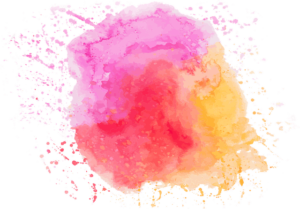
So, what is latex paint used for? Latex paint can be used on surfaces such as concrete slabs, drywall, concrete blocks, prepped furniture/wood, interior finish, fiberglass surfaces, metallic surfaces, aluminum siding, masonry, art, and craft.
However, the right concentration and proper procedure should be followed when applying latex paint to achieve the best final finish. Otherwise, you may end up experiencing some of the problems associated with latex paint, as highlighted in this article.
Details: What is Latex Paint Used For?
a. Concrete slabs and concrete blocks
Concrete slabs and blocks can be painted using latex paint without any stickiness problem. The paint molecules act instantly upon contact and cure in a couple of minutes. Besides, latex paint penetrates deeper into the wet concrete surface without affecting the structural formulation.
During the application process, you will need to follow these steps:
- Clean the slab/block surface with a paintbrush – to remove the debris and inclusions
- Prepare the primer and latex paint in the right concentration as instructed by the manufacturer
- Apply the acrylic latex primer and leave it to cure for 1 hour
- Finish with latex coat
NB: You may need to apply 2 or 3 coats according to the primary concrete texture’s nature. Moreover, sanding is needed when carrying out paint restoration.
b. Drywall
Drywall mainly includes stonewall, wooden wall, metallic wall, concrete wall, or composite wall. Either of these walls can be painted using latex paint as long as the initial condition is dried thoroughly. Wetness affects the stickiness of the latex paint upon a given primary material and weakens flow-ability during application.
Direct application can be carried out on a metallic wall, wooden wall, or composite without prepping. However, the stonewall requires initial polishing or cleaning to improve paint stickiness during application.
Follow the procedure below during allocation:
- Pre-clean the wall to be painted with a paintbrush. You can sand where necessary to remove debris.
- Dilute latex primer (where necessary) and latex paint as per the manufacturer’s instruction
- Apply the primer (for the stonewall)
- Finally, paint the wall evenly with latex paint
Do not sand the painted surface whatsoever – this may affect the finish appearance or dislodge the primary material.
c. Prepped furniture/wood
Latex paint is best for unfinished wood, prepped furniture, or dry surface wood composite. The paint molecules stick on the primary surface sufficiently and dry in a couple of minutes.
Peeling action is limited if proper procedure is followed while the edge chipping won’t occur for fine cut wooden blocks. Besides, latex paint has minimal dripping when applying on a wooden surface that concrete wall.
Follow the steps h8ighlighted below when painting:
- Sand the wooden surface/furniture to eliminate roughness or dirt particle – blow of dust
- Dilute the latex paint to the right concentration
- Apply the paint evenly over the surface and leave it to cure for 3 hours
- You can apply 2 or 3 coats over a given surface according to material finish demands.
d. Interior finish
Use of latex paint best finishes Interior work. This could either be concrete wall finish, wooden partitioning, metallic lining, or flooring. Latex paint is a water-based compound; thus, it’s easier to remove/clean during surface paint restoration or color change.
Besides, latex paint is less/non-flammable – reduces the spread of fire in case of such accidents. You will need to access the interior surface you intend to paint and match the best latex paint as per the manufacturer’s directives.
Latex paint is ideal when used as an undercoat for interior walls or furniture. Primer or prepping is need for material such as composites and ceramics to achieve the best stickiness strength.
Follow the steps below during application:
- Fine clean interior surface to eliminate dust and debris
- Dilute latex paint appropriately – use manufacturer’s guide
- Apply gently over the surface and leave it to cure
- Repeat the procedure for subsequent coatings
e. Fiberglass surfaces
Latex paint is entirely soaked and drained into the fiberglass material without any reaction. The paint molecules form a tough surface coating/layer that is further embedded in the fiberglass material – the latex paint formulation instantly sticks on the fiberglass upon application.
However, latex paint is easily washed out if exposed to wet or humid conditions. The peeling action of latex paint coating is minimal on fiberglass as compared to concrete and wooden surfaces.
Follow the steps highlighted below during application:
- Sand and dust the fiberglass surface perfectly with sandpaper – smoothens the surface to improve stickiness action
- Prepare latex paint and prep where necessary (especially when restoring the surface)
- Using a paintbrush, apply latex paint gently – froth and back horizontally, then up and down
NB: Never sand the fiberglass surface after painting – sanding affects primary surface microstructure and latex paint finish appearance.
f. Metallic surfaces and Aluminum siding
Latex paint sticks excellently on the metallic surface of material such as cast iron, mild steel, chrome, aluminum, and copper. However, high gloss metallic surface/high polished surfaces require prepping to improve stickiness ability when painting.
You can use latex paint for aluminum siding too. The latex paint coats the aluminum surface nicely and prevents it from fading or cracking, resulting in other oil-based paint.
Follow the procedure below during latex paint application:
- Clean the metal surface to remove debris, dust, or roughness – you can polish with sandpaper where appropriate
- Prepare latex paint in the right concentration
- Apply the paint gently over the metal surface to achieve a uniform coat
- Repeat step 3 for the next layer if necessary
NB: Do not sand metal after painting.
g. Art and Craft
Latex paint is manufactured in various colors that work incredibly for art and craft activities. Latex paint maintains natural texture and quality design, which dries quickly. Moreover, latex paint sticks instantly on artistic surfaces such as wood, canvas, metal, composites, and stone carvings.
Usually, you will need to prepare the surface ready for artwork appropriately and mix latex paint in the right concentration to achieve the best outlook design.
NB: Avoid excess dilution or thick coating as it may peel off when abrasive force is directly applied.
What are Major Problems Associated with Latex Paint?
Latex paint is not only coupled with numerous advantages; it also has some problems that crop up here and there during preparation, application, or final result. Some of the main problems of latex paint include:
- Less durable. Latex paint defaces (when exposed to direct sun) faster than oil-based paints. Therefore, it requires repetitive painting after a given period to maintain its original stunning outlook.
- Its are packed in large quantities. Latex paint is manufactured and packed in large quantities, unlike oil-based paint that comes in small containers. The structural formula has less concentration strength, and thus minimal dilution is carried out before painting. Therefore, a large quantity of latex paint is needed to cover a surface area.
- Less elastic or low expansion. The chemical formula used in the manufacture of latex paint is static and doesn’t allow elongation. Therefore, the application is a little bit tedious than oil-based paints.
- Dripping/drains. Latex paint drips when painting due to its inelastic bond properties. Latex drains form an uneven layer on the surface being painted if an excess amount is applied.
- The Peeling off/ Alligatoring. Latex paints peel off often from most surfaces if left for a long time before restoration. On the other hand, the paint can peel off due to high humid conditions or wetness, unlike oil-based paint.
- Blistering/bubbling. This condition occurs on the old latex painted surface where the air bubbles are concealed within the painted layer before peeling off. Naturally, blistering accelerates multiple paint peel or and chipping.
Which is the best Commercial Latex Paint?
1. Rust-Oleum 1976730 Painters Touch Latex
Rust-oleum is a quick-acting latex paint that features a simple structural formulation, which is self-activating and faster to clean. The paint is packed in a classic stable container (236ml) that is airtight to prevent oxidation.
Rust-oleum can be used on surfaces such as wood and metal without any problems. Indeed, this type of latex paint delivers unmatched performance both indoors and outdoors painting activities.
Notably, rust oleum comes with multiple colors for optional selection. The following are some of the best commercial latex paint for your painting activities.
2. KILZ Premium Interior/ Exterior Latex Primer
Kilz is a water-based latex primer that features a reliable stickiness formulation that acts instantly upon application.
The thick and creamy formula that comes with Kilz seals cracks and space, leaving behind a smooth, well-polished final surface.
Besides, Kilz comes with low VOC and excellent adhesion that works best for interior and exterior painting activities. Importantly, Kilz is easier to apply and fast drying.
3. RECOLOR 100% Recycled Latex Paint Wall Finish
Recolor paint is a reliable latex paint that is best suited for interior painting activities. The paint is specially manufactured using a simple water-based formula that sticks firmly and instantly upon contact.
Recolor is fast-drying (2 to 6 hours) and comes in multiple attractive colors for optional selection. Indeed, this latex paint is self-activating and leaves a smooth, well-polished final finish.
Furthermore, Recolor is simple to dilute and can be recycled or stored without losing its stickiness action. Notably, Recolor is environmentally friendly and won’t irritate your skin upon contact.
Conclusion
Latex paint is best used in surfaces such as drywall, metallic surface, aluminum siding, concrete slabs, wood, furniture, art, and craft.
You can also use latex paint on fiberglass surfaces, finish interior work, furnish concrete block and composite material. However, proper procedure and paint selection is a vital step in achieving the best surface finish.
Contrary, latex paint has several associated problems, as highlighted in this article. Therefore, appropriate painting measures should be carried out to maintain the initial stunning outlook in place.
